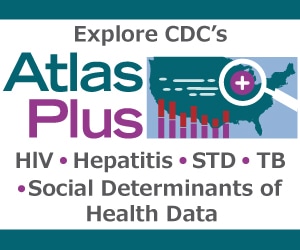DDP Data/Reports
Data and reports for HIV/AIDS, sexually transmitted diseases (STDs), and viral hepatitis can be accessed on this page. Many data include a combination as the burden of these infections is related.
If you cannot find the information you wish to access on this page, you can make a data request through our division. Please note the following information, however, before making a data request:
- If you are with the media please contact Public Relations.
- Data requests made through DDP can only be may for chlamydia, gonorrhea, syphilis, and HIV data. DDP does not handle data requests for other health subjects. For other data and data requests, please visit the VDH data portal.
Find information on how to make a data request for STDs, HIV/AIDS, and/or hepatitis B/C.
National Resources
- Atlas: CDC’s National Center for HIV/AIDS, Viral Hepatitis, STD and TB Prevention (NCHHSTP) interactive tool allowing users to create maps, charts and tables using nationwide HIV/AIDS and STD surveillance data
- AIDSVu: Interactive online map of HIV prevalence developed by the Rollins School of Public Health at Emory University of the Richmond Metropolitan Statistical Area (MSA) and Hampton Roads
- CDC’s STD Data and Statistics
- HepVu: Interactive online maps that visualize the Hepatitis C epidemic across the country.
Virginia Data/Data by Condition
HIV/AIDS Annual Reports
HIV Epidemiology Profiles
2023 Updates:
2022 Updates:
2021 Updates:
2020 Virginia HIV Epidemiologic Profile
2019 Updates:
2018 Updates:
2016 Virginia HIV Epidemiologic Profile
HIV Continuum of Care
Virginia’s HIV Continuum of Care (HCC) is a framework used to monitor health outcomes of persons living with HIV in Virginia from initial diagnosis to viral suppression. The HCC below presents these definitions:
-
- Care marker: a "care marker" is defined as a CD4, viral load, or genotype testing lab, an HIV medical care visit, or an antiretroviral (ART) prescription; these are considered markers for evidence of HIV care.
- Persons with HIV (PWH): the number of persons aware of their status, diagnosed and living with HIV with a last known residence in Virginia as of the end of the calendar year (CY).
- Newly diagnosed and linked to HIV care within 30 days: persons newly diagnosed in Virginia and linked to HIV care within 30 days from initial diagnosis.
- Evidence of HIV care: persons with HIV, who had at least one care marker in the calendar year.
- Retained in HIV care: persons with HIV, who had at least two care markers at least 3 months (90 days) apart in the calendar year.
- Virally suppressed: persons with HIV, with their most recent viral load in the calendar year, measuring at <200 copies/milliliter (mL).
All data presented for Virginia’s HCC comes from the Care Markers Database and eHARS within the Division of Disease Prevention.
HIV Continuum of Care for CHARLII Clients
VA Medication Assistance Program Updates
STD Annual Reports 2023
STD Annual Reports 2022
STD Annual Reports 2021
STD Annual Reports 2020
STD Annual Reports 2019
STD Annual Reports 2018
STD Annual Reports 2017
Virginia Profile from the National Center for HIV/AIDS, Viral Hepatitis, STD, and TB Prevention
Virginia Viral Hepatitis Surveillance Data
Virginia Hepatitis C Epidemiological Profile
2021 Revised Sections
2018 Revised Sections
2016 Virginia Hepatitis C Epidemiological Profile
National Viral Hepatitis Data
DDP Data Requests
Please follow the instructions below for data requests
-
- If you are with the media please contact Public Relations.
- Please review the DDP data & reports page and the main VDH data portal to see if we have what you need.
- DDP can only provide chlamydia, gonorrhea, syphilis, hepatitis B and C, and HIV/AIDS data.
- For other data requests, please visit the VDH data portal
- If you cannot find what you are looking for, complete, use the button at the bottom of this section to make a data request.
Important Notes Regarding DDP Data Requests
-
- It is important to note that HIV data is not final until 12 months following diagnosis date. Data on sexually transmitted diseases (STD; chlamydia, gonorrhea, syphilis) are considered complete in May following the close of the year. Data on hepatitis B and C are typically considered complete in July following the close of the year.
-
- To maintain confidentiality, suppression may be warranted for certain data where population size and/or number of cases are too small to report. Zip codes in Virginia are subject to change over time; therefore, requests for number of cases or rates by zip code may not be an accurate geographic unit of measure.
-
- Rates for a partial year of data are not calculated.
-
- Requests for data below the county level must be reviewed by DDP management and approved on a case-by-case basis. Data requests that are especially complex may be subject to the conditions of the Freedom of Information Act (FOIA) and a charge for staff time may be warranted. Data to be used for research purposes may require review by the VDH Institutional Review Board (IRB).


